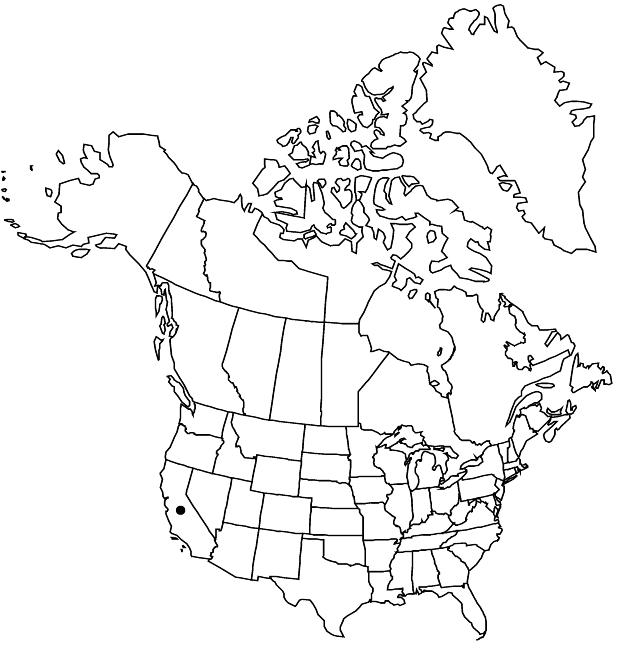Ribes tularense
Just’s Bot. Jahresber. 36(2): 519. 1910 (as tularensis) ,.
Plants 0.1–0.5 m. Stems prostrate, villous-pubescent, stipitate-glandular; spines at nodes 3, 3–8(–10) mm; prickles on internodes scattered. Leaves: petiole 2–2.5 cm, puberulent; blade roundish, irregularly 3(–5)-lobed, cleft 1/2+ to midrib, 2–5 cm, base broadly truncate, surfaces hairy, stipitate-glandular, lobes broadly cuneate, sides mostly straight or concave, margins very irregularly blunt-toothed, apex rounded. Inflorescences pendent, solitary flowers or 2–3-flowered racemes, 1–1.5 cm, axis villous, stipitate-glandular, flowers evenly spaced. Pedicels not jointed, 2–4 mm, villous, stipitate-glandular; bracts lanceolate-ovate, 2–3 mm, villous, stipitate-glandular. Flowers: hypanthium green, campanulate, 2–4 mm (as wide as long), sparsely pubescent to villous; sepals not overlapping, reflexed, green to white, narrowly oblong, abaxially shallowly concave, 6 mm; petals separated, erect, white, oblong-truncate, somewhat inrolled, 2–3 mm; nectary disc not prominent; stamens shorter than to as long as petals; filaments linear, 2–2.5 mm, glabrous; anthers white, narrowly oblong, 1–1.8 mm, apex blunt; ovary densely villous with some gland-tipped bristles; styles connate 1/2 their lengths, 4–6 mm, glabrous. Berries palatability not known, light yellow, globose, 8–10 mm, hairs nonglandular, bristles glandular, developing into spines.
Phenology: Flowering May.
Habitat: Yellow pine and red fir forests
Elevation: 1500-1800 m
Discussion
Of conservation concern.
Ribes tularense is known from ten populations, all in Tulare County.
Selected References
None.
